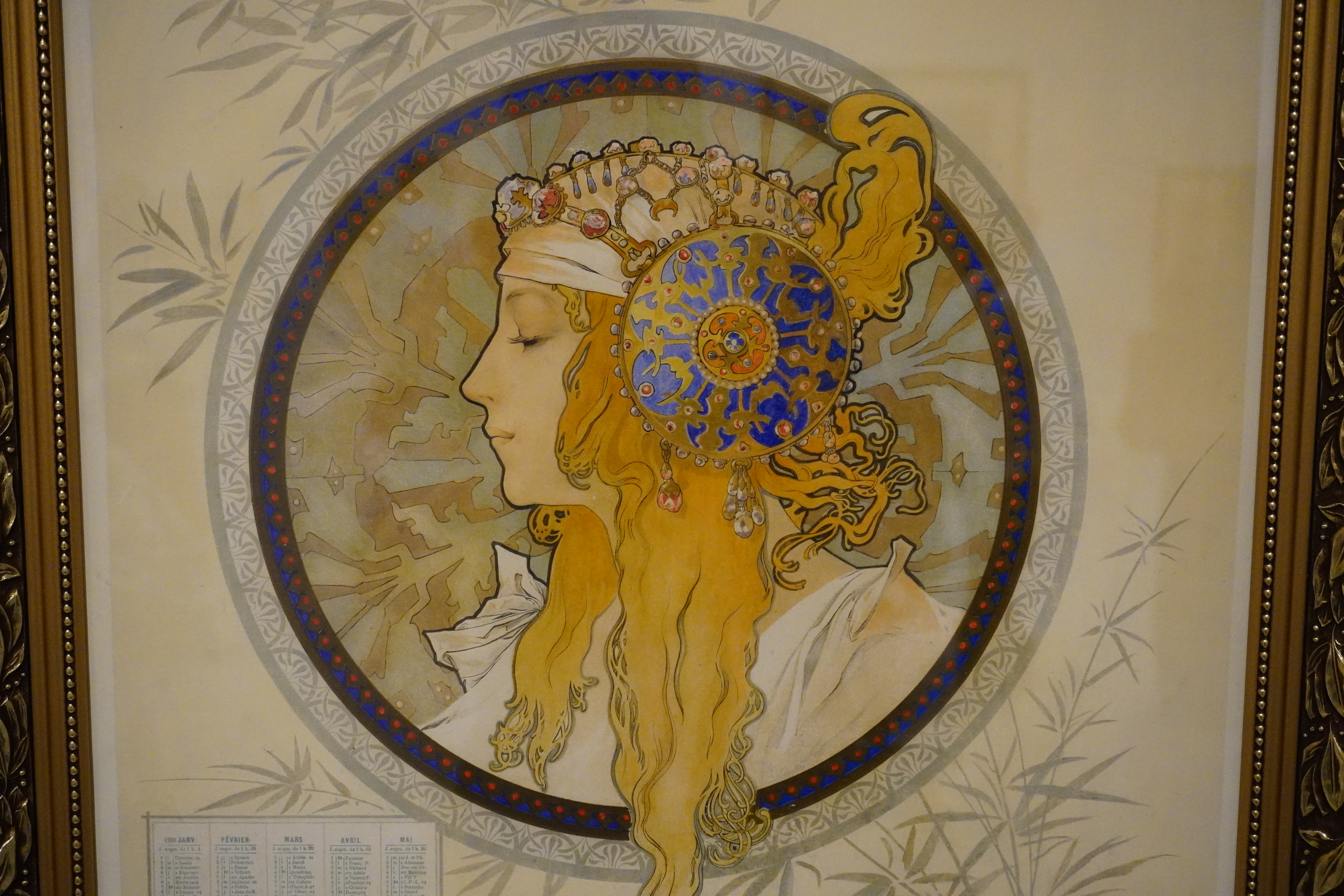This article originally appeared in the October 2023 issue of Connect.
Mark Christensen (Fukuoka)
Fukuoka Prefecture is a wonderful place to live. From balmy temperatures to beautiful beaches, there’s a lot to enjoy. Yet surprisingly, one of the greatest local treasures is art!
With no less than three major art museums (the Kyushu National Museum, the Fukuoka Art Museum, and the Fukuoka Asian Art Museum), local residents have access to an incredible and ever-changing variety of artwork from around Japan and the world.
During my time in Fukuoka, I’ve enjoyed art exhibitions featuring French art, the legendary works of Hokusai, art from a Kyoto temple, and much more. But the artist that caught my attention above all others was Alphonse Mucha.
Born in 1860 in the Austrian Empire, Alphonse Mucha was a bright student with a taste for music. He was remarkably skilled and was not only a vocalist but also played instruments. However, his greatest passion was for art, and even at an early age his skill was evident.
Yet, even with his meticulous eye and unique creativity, which can be seen in many of his early designs and sketches, he met with only mixed success and faced a number of setbacks. For example, when applying to a major art academy in Prague, his application was rejected and he was told to consider other work.
He didn’t give up, however, and eventually built connections with other artists and traveled across Europe, seeking to improve his education and pursue opportunities.
It wasn’t until his later arrival in Paris that he achieved new heights of success and popularity. When Sarah Bernhardt’s popular play Gismonda extended its theatrical run, the theater needed new posters on short notice. Mucha happened to be available, and his vibrant, colorful posters quickly became a sensation in Europe.
Perusing through the Mucha exhibition, I too found myself falling in love with his style. Mucha’s art tends to be highly detailed, yet retains a refined, balanced appearance. One of the most recognizable elements of his style is his embellishments.
In his piece Gismonda, for example, he created an intricate backdrop of Byzantine tiles and put an incredible emphasis on the embroidered clothing of the main character. Many of his other works also incorporate beautiful backgrounds and borders including flowers, stars, and elegant mosaics.
Another unusual feature of his style is his ability to capture very organic and expressive portrayals, particularly of women. I found his art piece Medee haunting for capturing the ghastly hatred and murderous intent of the main character. In contrast, pieces like North Star and Moonlight conveyed feelings of playful sensuality and mysticism, which was further enhanced by his incredible detail to skin and fabric.
I was surprised to learn about his interest in Slavic history and mythology. Perhaps one of his greatest works is his 20 piece Slav Epic, which captures many iconic moments in the history of the various Slavic peoples of Europe. While the original pieces weren’t physically present, the representations were quite incredible. It’s not surprising to me in the least that he saw them as his greatest legacy.
Mucha wasn’t only focused on grand epics or famous posters, though. One major source of his income was selling art supporting various products, which he did quite prolifically. His products had a clear and unique style, not unlike Andy Warhol’s iconic illustrations for Campbell Soup.
The exhibition showed some of these products, which included biscuit tins, perfume bottles, and fans. In fact, his art was so well known that the Czechoslovakian government actually had him create the designs for their postal stamps and paper money!
The most humanizing element of the display was perhaps the look into his personal life, which included his childhood art and family life, as well as his relationship with the people he used as models for his art.
Tragically, in his final years, Mucha himself found himself prisoner to the times. A new German dictator declared the annexation of Czechoslovakia, and as a major proponent of Slavic culture and history, he was a prime target. He was arrested and released, dying shortly after due to poor health.
Despite decades of oppression, Mucha’s art and legacy survived, enduring both the Nazi and Communist occupations of the Czech Republic.
Today, his art is popular all over the world. Even if you can’t catch his exhibition, you can still enjoy his art in the Sakai Alphonse Mucha Museum in Osaka! Why don’t you check it out?
Mark Christensen is a fifth-year ALT from Snohomish, Washington in the United States. An avid photographer, he has a passion for mountaineering and capturing the beauty of Japan. He currently resides in Omuta, Fukuoka. You can follow his photography at his Instagram.



![CONNECT ART ISSUE 2024 SUBMISSIONS [CLOSED]](http://connect.ajet.net/wp-content/uploads/2024/04/ARTISSUE-INSTA-600x500.png)





